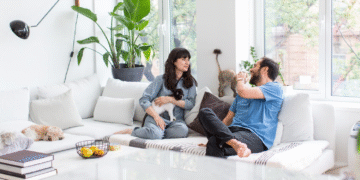Image from Unsplash
If you’ve ever tossed and turned at 2 AM, staring at the ceiling and wondering whether your brain has a secret to-do list it only reveals at bedtime, you’re not alone. In the quest for better sleep, many people turn to teas, supplements, or even reach for chocolate, only to later look up things like theobromine side effects when that midnight treat leads to wide-eyed restlessness. But what if the real fix isn’t in what you consume, but how you wind down?
Welcome to the world of sleep hygiene, a set of simple, intentional practices that can train your brain to embrace rest the way a comfy hoodie signals relaxation. Let’s explore how to reset your evenings with rituals that genuinely work, no pills required.
The Evening Begins in the Morning
One of the most overlooked secrets of great sleep is how you start your day. Morning light exposure is a cornerstone of circadian rhythm regulation. When you step outside within an hour of waking, even if it’s just for a coffee stroll, you’re cueing your body to stay alert during the day, and wind down more effectively at night.
This isn’t woo-woo. Exposure to natural sunlight helps suppress melatonin production early, so that your body releases it more predictably in the evening. Think of it as resetting your internal clock daily, just by stepping outside. Combine this with some gentle movement or a brief walk, and you’ve already improved your sleep before lunch.
Say No to Revenge Bedtime Procrastination
You know the feeling, you finally have a moment to yourself at 10 PM, and suddenly your brain decides it’s TikTok o’clock. This phenomenon has a name: revenge bedtime procrastination. It’s what happens when you sacrifice sleep to reclaim personal time.
The key here isn’t guilt, it’s boundaries. Design a cut-off time for screens and commit to an evening ritual instead. Replace endless scrolling with something intentional: reading a paperback, journaling, or even a short stretching session. If you need noise, go for ambient sounds or calming playlists, not dramatic plot twists or rapid-fire notifications.
Create a Sleep-Inducing Environment
Your bedroom should feel like a sleep spa, not a backup office or media hub. That means:
- Keep it cool: 60–67°F (15–19°C) is optimal for most people.
- Keep it dark: blackout curtains or an eye mask can work wonders.
- Keep it quiet: white noise machines or earplugs can neutralize disruptive sounds.
While we’re at it, let’s talk about your mattress and pillow. If you’re waking up sore, it’s not you, it’s your bedding. You don’t need to spend a fortune, but investing in quality sleep surfaces is a game-changer.
Watch What You Ingest After Dark
Image from Unsplash
Evening habits around food and drink can heavily influence how well you sleep. Big meals close to bedtime? They can trigger digestion issues. Alcohol might make you sleepy at first, but it disrupts REM cycles later in the night. And caffeine? It’s not just in coffee.
Dark chocolate, certain teas, and even some protein bars contain caffeine or its milder cousin, theobromine. While theobromine is less intense, it still has stimulating effects, especially if consumed in high quantities or late in the day. That’s why it’s useful to be aware of ingredients and theobromine side effects when choosing your evening snacks.
For a more restful routine, opt for a soothing herbal tea like chamomile, rooibos, or lemon balm, none of which will leave you wondering why you’re still awake at midnight.
Move Gently, Then Still Completely
Vigorous workouts in the evening can raise your core body temperature and adrenaline levels, making it harder to fall asleep. That doesn’t mean no movement at all, just switch to gentler options.
Try:
- A short yin yoga sequence
- Progressive muscle relaxation
- Simple stretching with slow breaths
These activities calm your nervous system and prep your body for deep rest. Think of it like cooling down after a workout, but for your day.
Set a Digital Sunset
Our devices emit blue light, which suppresses melatonin, the hormone that makes us sleepy. Even worse, the content itself (doomscrolling, anyone?) keeps our minds alert. Creating a digital sunset means establishing a firm “screens off” time, ideally an hour before bed.
Use this time to do anything analog: a puzzle, light cleaning, doodling, or chatting with your partner or pet. If you must use screens, switch on night mode or use blue light filters. But the goal is to remind your brain that bedtime is approaching.
Build a Bedtime Routine (Yes, Like a Kid)
Children aren’t the only ones who benefit from predictable bedtime cues. Adults thrive on routine too. A simple series of steps, done in the same order each night, can become a powerful psychological signal to wind down.
An ideal routine might look like this:
- Dim the lights
- Brush teeth and wash face
- Sip herbal tea
- Read a chapter of a book
- Listen to calming music or a meditation app
- Get into bed and stay off your phone
The key is consistency. When your body knows what’s coming next, it naturally eases into sleep mode.
Let the Mind Wander – With Purpose
Racing thoughts are the enemy of good sleep. If you find yourself mentally reviewing your inbox at midnight, try this: give your brain something else to chew on.
Techniques like cognitive shuffling, guided visualization, or even counting backward from 300 in threes can help distract your mind just enough to let it slip into sleep. Some people swear by keeping a notepad by the bed to dump worries before sleep, a kind of brain decluttering.
Respect the Power of Light
Artificial light has revolutionized our lives, but it’s also confused our brains. Bright overhead lights trick your body into thinking it’s still daytime. In the evening, try using soft, warm lighting, lamps instead of ceiling lights, candles if you like ambiance.
And in the morning? Let the sunlight in as soon as you wake up. This kind of natural light exposure helps regulate your internal clock, making it easier to feel sleepy when it’s actually bedtime.
The Evidence Behind Sleep Hygiene
The practices above aren’t just feel-good fluff. Studies from institutions like the National Institute of Neurological Disorders and Stroke (NINDS) underscore the importance of consistent sleep habits and light exposure in maintaining healthy sleep cycles.
According to the NINDS, irregular schedules, screen exposure, and poor bedtime habits can all undermine the body’s sleep-wake rhythm, resulting in insomnia, daytime fatigue, and even long-term health problems. Sleep hygiene, when practiced daily, helps align your behavior with your biology.
Turning Off to Tune In
You don’t need a prescription to start sleeping better, you need a rhythm. Evening rituals rooted in comfort, boundaries, and mindful intention can gradually retrain your body to sleep like it remembers how.
So tonight, instead of chasing sleep through a screen or snack, try stepping into a quiet routine. You might just find that your best dreams start with a dim light, a deep breath, and the decision to unplug.













